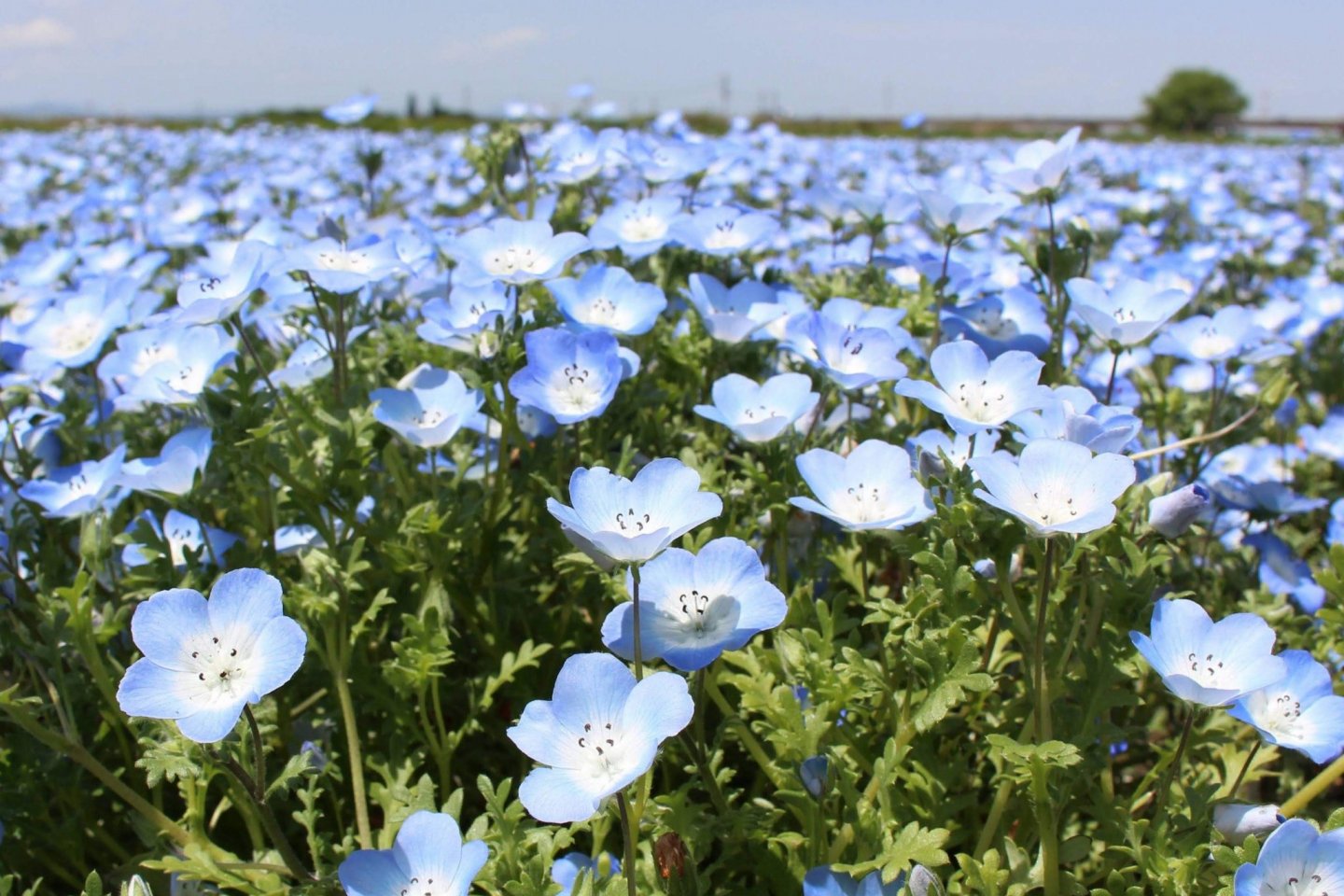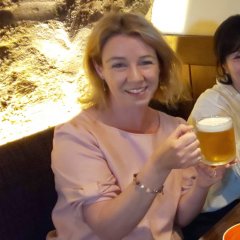Nemophila are also known as Baby Blue Eyes due to the light blue color of the main variety. However, not all Nemophila are blue. In Japan, you will also see white Nemophila in select locations. They are a small flower that typically only grow to about 20 centimeters tall.
Technically speaking, the flower is part of the Boraginaceae family. The name Nemophila comes from the Greek ‘nemos’ meaning ‘small forest’ and ‘phileo’ meaning ‘to love’. In Japanese they are called Rurikarakusa. The flower typically blooms around the end of April until early May. However, in both 2020 and 2021 they were early to bloom and thus early to finish up.
While not native to Japan, there are still dozens of places where you can see them. Hitachi Seaside Park is perhaps the most famous place in all of Japan for Nemophila. The image of a never ending "sea of blue" is also one of Japan's most famous spring scenes. The second largest Nemophila field is in the Sera Kogen Flower Village in Hiroshima. You can also see beautiful moss phlox fields at that location.
In Japan the term 'hunt' is used in relation to flower viewing whereas in natural English, we might say 'search' instead. Personally, I think the word 'hunt' is more befitting as I have become quite a flower 'hunter' since moving to Japan. I am always out looking for seasonal flowers to enjoy. On a recent visit to Japan's largest poppy field to see the early blooming California poppies there, I was delighted to find that they also had three fields of Baby Blue Eyes. They only started to bloom around the end of April which means they will last until around mid-May.
You'll find Baby Blue Eye fields in several prefectures around Japan. To help locate them, simply use the search function on the Japan Travel homepage to find Baby Blue Eye flowers near the locations and destinations you will be visiting.


























